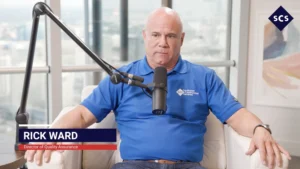Terminator-Inspired Shape-Shifting Robot Becomes Reality. What Use Cases Does It Have in Manufacturing?
Thirty-two years after the release of Terminator 2, groundbreaking research in phase-shifting materials has made it possible for a real-life shape-shifting robot to exist. This new robot has the same ability as the T-1000 to transform into a liquid shape and pass through barriers. However, that’s where the similarities end.
The new robot was developed by a team from The Chinese University of Hong Kong under the direction of Dr. Chengfeng Pan. It is made up of a newly developed phase-shifting material researchers call “magnetoactive liquid-solid phase transitional matter,” or MPTM. Magnetic particles embedded in the material of the robot allow users to control it. This means it can be heated and cooled on demand using an alternating magnetic field to melt it into a liquid and then solidify it again.
This research is just one of the many advancements shaping the future of robotics and its use cases. Scientists are hoping that this discovery will one day be of use in a variety of fields, including medicine and assembly lines. MPTM could make it easier to solder and screw parts in hard-to-reach places, for example, but that’s hopefully just scratching the surface of its utility.
How can the manufacturing industry benefit from a shape-shifting robot? And are there any manufacturing applications where a flexible structure can make a huge difference? We reached out to Rhonda DiBachi, CEO of HeyScottie, for her expert opinion and analysis on this T-1000 tech. Rhonda has been implementing manufacturing techniques for companies since the 1980s and founded numerous startups for tech and manufacturing.
Rhonda’s Thoughts:
“I don’t know of any manufacturing applications for this new material called MPTM or Magnetoactive Phase Transitional Matter. It’s early days. I do know of some applications of a similar kind of material called a shape memory alloy. That’s metals that change their shape depending upon changes in temperature and pressure.
I know that those are used in pneumatic and flow control systems to change valves. That’s interesting. An interesting application for this new kind of material, MPTM, I would think would be 3D printing, metal 3D printing. You could create struts using this material and when you’re building up the part you could use the struts, they would be structural.
But then when you’re done building up the part, you don’t need the struts anymore. And, if you could flip a switch and make them change their shape, they might be able to just slither out, making removal quite a bit easier than it is right now. Could be interesting.”
Article written by Sonia Gossai.








